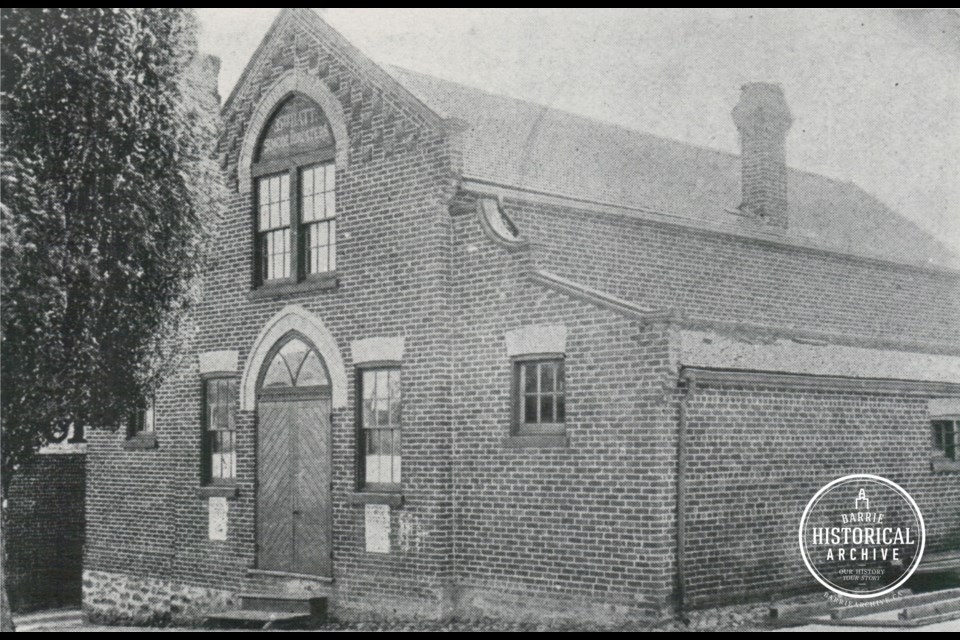This ongoing series from Barrie Historical Archive curator Deb Exel shows old photos from the collection and one from the present day, as well as the story behind them.
Military Drill Hall – 36 Mulcaster St.
It wasn’t the first military drill hall in Barrie, nor the last. But it has survived and returned to duty, so to speak.
In 1866, Lt.-Col. Dennis of the Federal Ministry of Militia visited Barrie to choose a site for a county battalion drill shed. St. Vincent Square had been selected, having the space for not only drills but also a fairground. However, the drill shed was ultimately built in 1868 on a six-acre parcel donated by Arch Thomson, which became Queen’s Park.
When this first wooden drill shed burned in 1886 a new drill hall was built on Mulcaster Street two years later.
The new drill hall had several purposes. In addition to replacing the original building in Queen’s Park, it functioned as the company armoury, band room, quartermaster’s stores and orderly room. It was ridiculed for its small size, but it was nonetheless the headquarters for the 35th Battalion Simcoe Foresters.
In 1914 when the impressive new armoury was built in Queen’s Park, the regiment transferred there.
By the late 1920s the former drill hall stood vacant until the Town of Barrie began using the space as the Board of Works building.
In the late 1940s, talk at town council turned to the issue of a market building. More than 100 years earlier, the Simcoe Agricultural Society established a public market in a block at the intersection of Mulcaster and Collier streets. It was in this square that farmers and vendors gathered to sell their produce, meat and other goods.
In 1854, the rights to this market square shifted to the new Barrie town council. Their first order of business? To build a town hall and market building. The structure was completed in 1856.
But in 1947, council closed the market and used that space for municipal offices. The town hall was also going through a dramatic physical transformation at that time, losing all its fanciful and decorative architectural features in favour of a new austere look.
The solution to the market building problem was to use the public works shed — the old military drill hall — on Saturdays for vendors, and the Board of Works would use the facilities during the week. Erecting additional sheds adjacent to the old drill hall was also considered.
The public and vendors adjusted to the change and on the Saturday before Christmas 1948, crowds were lined up that morning to get into the newly renovated building. The Board of Works had by that time moved out of the building, making room for selling counters on each side of the old hall. A long table down the centre of the room was heaped with chickens, turkeys, ducks and geese.
More than 200 people showed up to shop for Christmas … turkeys were piled along the back wall of the hall, the supply continuously refreshed by men hauling hampers of fowl through the rear door. Baked goods such as homemade bread, coffee cakes, sugar and cinnamon buns, tarts and more, were in abundance. Frosted and two layers cakes were going for 40 to 50 cents. Christmas cakes were 70 cents a pound … and an extra 25 for iced cakes.
The building would not remain a market indefinitely.
It was later the offices of MPP Joe Tascona.
Recognizing the importance of the structure, a committee of city council rejuvenated the drill hall, and in 1995, the building was designated under the Ontario Heritage Act for it architectural and historical significance.
Appropriately, the little drill shed has been returned to ‘military service’ and is now home to the outstanding Grey and Simcoe Foresters Regimental Museum.



